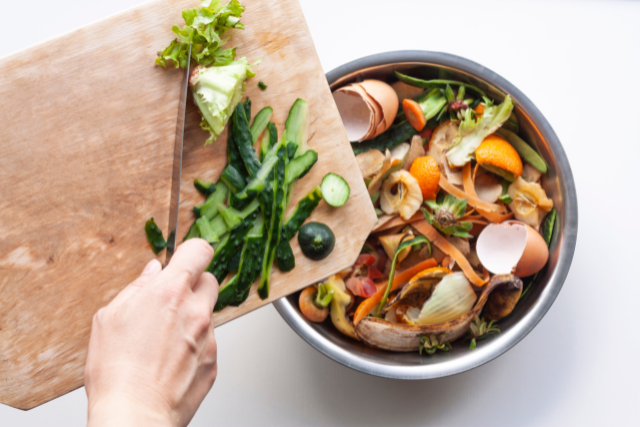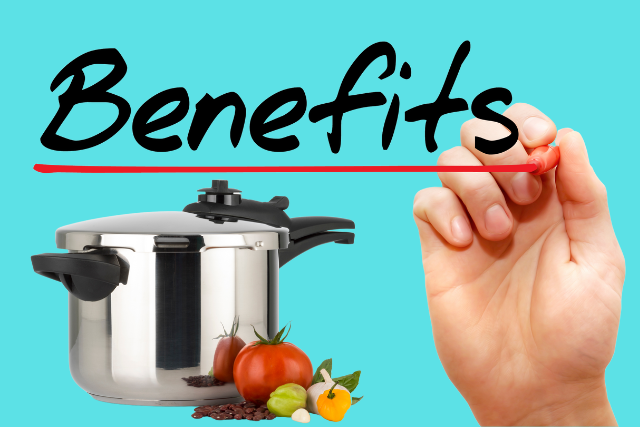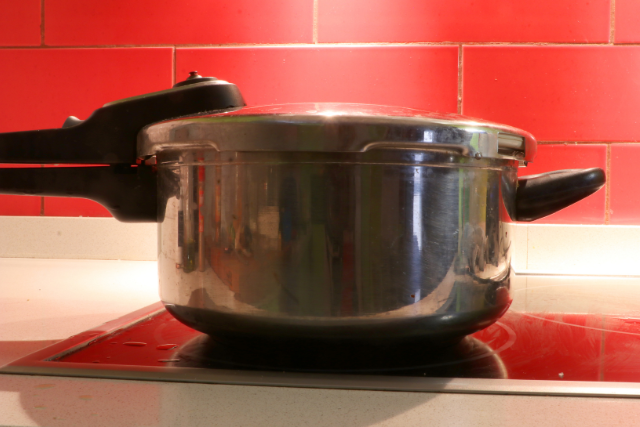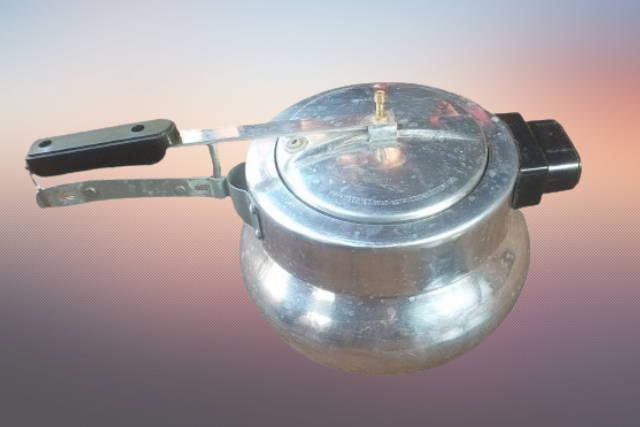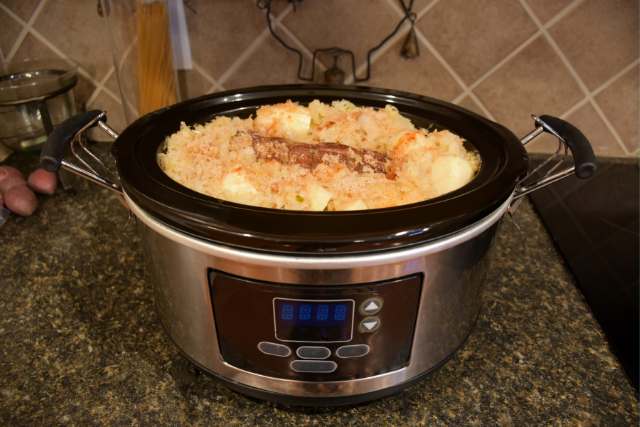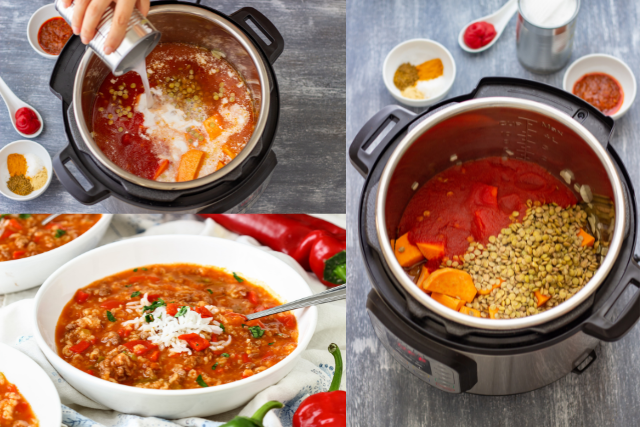15 Essential Do's and Don'ts of Pressure Cooking
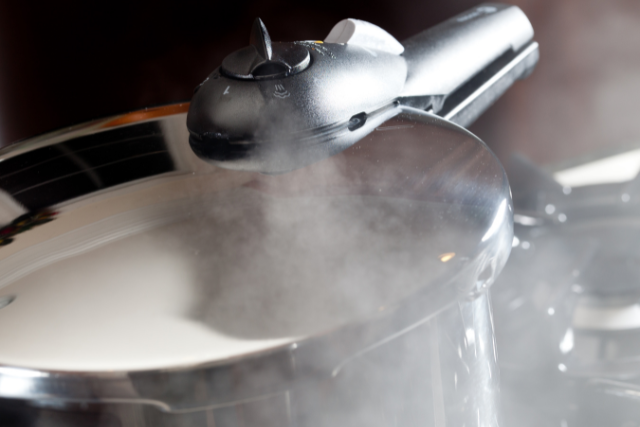
A lot of people who cook at home, about 79%, say they’re not too sure how to use a pressure cooker right. This gadget can make cooking way faster, but sometimes it’s not used much because folks are a bit unsure about the right and wrong ways to use it.
You might know it’s important to check the seal and not to fill it too much, but there’s more to learn to get the hang of it. If you want to make your stew just right or try out new dishes, knowing the basic rules can help you get better at cooking. Let’s talk about how to use a pressure cooker the right way, so you can enjoy every meal you make with it.
Key Takeaways
- Always check the seal and vent for cleanliness and damage to ensure safe operation.
- Use the correct amount of liquid and avoid overfilling to prevent accidents.
- Disassemble and clean the lid and its components after every use for maintenance.
- Experiment with recipes and join communities for better pressure cooking experiences.
Understand Your Pressure Cooker
Before you start using your pressure cooker, it’s important to learn about what it can do and what you should not do with it. When you use a pressure cooker, you join a group of people who like to cook food fast and make it taste good. The first thing to do is to read the guide that comes with your cooker. This will help you know how to use it right and keep things safe.
Each pressure cooker is different, so knowing how to use yours will help you cook better meals. You also need to know how much food and liquid you can put in it. Putting too much can cause problems. Always check the maximum fill line to make sure you’re not adding too much. This is very important for keeping your cooking safe.
Check the Seal Regularly
Knowing how your pressure cooker works and how big it is matters a lot. But, don’t forget to check its seal often to cook safely and well. Think of the seal, or gasket, as the heart of your pressure cooker. If the seal isn’t right, your cooker can’t build up pressure, and you won’t get the quick, tasty meals you’re hoping for.
Every few times you use it, look at the seal closely. Check if it has any cracks, feels hard, or looks out of shape. These small problems can cause steam to escape. This doesn’t just make cooking take longer; it can also be dangerous. Keeping the seal in good shape helps make sure your food turns out great every time.
Don’t Overfill Your Cooker
It’s tempting to fill your pressure cooker up to get things done faster. But, it’s super important to not go past the maximum capacity that’s recommended. If you put too much in, it can be dangerous and your food might not turn out as good. Let’s talk about why it’s better to follow those limits for safer and tastier meals.
Max Capacity Guidelines
It’s super important to follow the maximum capacity guidelines for your pressure cooker to make sure it works right and stays safe. Every cooker comes with its own set of directions, and getting to know these isn’t just a good idea; it’s a must. This way, you’re making sure you cook safely and get the most out of your pressure cooker. By sticking to these rules, you’re part of a group of smart cooks who care a lot about safety and making great food.
Overfilling Risks
Filling your pressure cooker too much can cause messy spills and stop it from working well. You’re not alone in figuring out how much to fill it. You’re part of a group learning together. Here’s a simple guide to keep you and your food safe.
- For liquids like water or broth, fill the cooker no more than 2/3 full. This stops it from overflowing.
- For grains and beans, fill it only 1/2 full. They need space to get bigger.
- For other foods, filling it 3/4 full is good. This helps cook everything evenly.
Following these tips makes sure you’re cooking safely and well. You’re not just cooking; you’re getting better at it with lots of people supporting you. Let’s make our pressure cooking fun and safe, together.
Use Enough Liquid
Making sure your pressure cooker has enough liquid is important for safety and to make sure your food cooks well. If you don’t have enough liquid, you could burn your food and even damage your pressure cooker. Think of it as working together with your pressure cooker to avoid problems and make every meal come out great.
Always use at least one cup of liquid. This is a key rule. But keep in mind what you’re cooking. Foods like meats or veggies can release their juices, so sometimes you might not need as much liquid. But if you’re just starting, it’s safer to use more liquid than less. Knowing these basics helps you stand out in the cooking community.
Paying attention to how much liquid you use helps you connect with other people who love pressure cooking. It’s not just about sticking to recipes. It’s about being precise and careful in your cooking. So, share this tip with your friends who cook, and see how it improves your pressure cooking skills. This will make you feel proud and happy about your cooking.
Avoid Quick Pressure Release With Liquids
When you get good at adding the right amount of liquid to your pressure cooker, there’s something else important to know. If you’re cooking with lots of liquids like soups or broths, don’t use the quick pressure release. People who cook a lot with pressure cookers share this tip because it matters.
Here’s why: if you use the quick release with these kinds of dishes, it can cause a big, dangerous mess, almost like a volcano. The steam and liquid need time to calm down. So, it’s safer and smarter to let things cool down slowly.
Choose the natural release method instead. This way, the pressure goes down on its own, slowly, and keeps everything under control. Next time you cook something with a lot of liquid, remember to take your time. It’s not just about cooking; it’s about doing it safely and well.
Don’t Ignore Cooking Times
When using a pressure cooker, being exact with how long you cook stuff is really important. If you don’t watch the time, you could end up with food that’s too soft or not cooked enough, which isn’t safe. To make sure your food turns out just right, you need to be careful with the cooking times.
Importance of Precision
When you cook with a pressure cooker, getting the timing right is super important for making sure your food turns out good. Being in the pressure-cooking community means you care a lot about getting things just right. You can’t just throw things in and hope for the best. Every ingredient needs to be cooked for just the right amount of time. This shows you really know what you’re doing and you pay attention to the little things.
If you follow the recommended cooking times, your food will be tender and yummy, not too hard or not cooked enough. Being accurate with time is a big deal here because it’s key to making tasty meals.
Risks of Overcooking
Cooking your food just right is important. If you cook it too much, you might end up with a meal that doesn’t taste as good as it could. Overcooked food can be tough to chew if it’s meat, or too soft if it’s vegetables.
Plus, it might not have as many nutrients or flavours. You want your meals to make you happy, not sad. Think of every ingredient as a friend in your kitchen. Cooking them for the right amount of time means everyone gets to shine. Don’t be fooled by how easy pressure cooking seems; paying attention to the little things is what makes eating together special.
Undercooking Safety Concerns
It’s really important to cook food long enough because if you don’t, you could get sick. Think of the pressure cooking group as a big family that helps each other stay safe. So, don’t rush the cooking time. Foods like meats need to get hot enough inside to kill bad bacteria. You wouldn’t want to make your friends or family sick, right?
Make sure to cook your food for the time it’s supposed to and check that it’s hot enough inside. This is a way to show you care. When we use our pressure cookers, let’s make sure our food is yummy and safe to eat.
Perform Regular Maintenance
To make sure your pressure cooker works great for a long time, it’s important to take good care of it. This means you can always whip up yummy meals for everyone to enjoy.
First, always check the sealing ring. This part is key because it keeps the steam inside. If it looks old or has cracks, you need a new one. You don’t want steam escaping!
Next, pay attention to the vent. If this gets blocked, it can be unsafe. Always look at it and clean it to make sure steam can flow freely. This helps your cooker stay safe to use.
Also, don’t forget to clean the pot. Any gunk can mess with how long it takes to cook food and how it tastes. A clean pot means tasty meals every time.
Brown Meats First
Before cooking in your pressure cooker, it’s smart to brown meats first. This step makes your dishes taste way better and gives the meat a great texture. People who love cooking do this to make their food delicious. When you brown meat, it’s not only about changing its look but also about bringing out a flavour that pressure cooking alone can’t give.
Here’s how you do it:
- Heat Oil: Make sure the oil is hot so the meat browns well. Pick an oil that can handle high heat.
- Sear Meat: This step makes the meat taste amazing. Just remember to cook a little at a time so each piece gets browned nicely.
- Deglaze: After browning, there will be tasty bits stuck to the bottom. Add some broth or wine to get all that flavour into your dish.
- Pressure Cook: Now, with all those flavours ready, go ahead and pressure cook. Just stick to the amount of liquid your recipe needs.
Keep the Lid Clean
Making sure the lid of your pressure cooker is clean is important. It helps it work better and last longer. Let’s talk about how to take care of the lid and make sure you don’t mess it up when you’re cleaning it. By following these tips, your pressure cooking will be safe and work well every time.
To keep it simple, remember these key points:
- Always check the lid and seals for any food bits or grease and clean them off.
- Use gentle cleaners and soft cloths to avoid scratching or damaging the lid.
- Make sure the vent is clear so steam can escape properly.
- Dry the lid well after washing to stop rust or mould from growing.
Lid Maintenance Tips
Keeping your pressure cooker’s lid clean is very important for safety and making sure it works right. Think of yourself as part of a group that loves cooking good food. To make your pressure cooker last longer, always check the lid for any leftover food or dirt. After you use it, wash the lid with warm water and soap.
Make sure to clean the valve and seals well because they need to be clean to work right. Rinse it well and let it dry on its own or use a soft cloth to dry it. By doing this, your pressure cooker will be ready for your next time cooking and will work well for a long time.
Avoiding Lid Damage
Taking care of your pressure cooker’s lid is important to keep it working well for a long time. As part of a group that cares about keeping kitchen tools in good shape, cleaning the lid of your pressure cooker is a must.
Here’s a simple guide:
Do:
- Take apart and clean the lid every time you use it.
- Make sure it’s completely dry before you put it back together.
- Look at the sealing ring often to see if it’s getting old or worn out.
- For cleaning, use gentle sponges or cloths.
Don’t:
- Leave bits of food on the lid.
- Keep it closed tight when you’re not using it.
- Ignore any cracks or weird shapes on it.
- Use rough cleaners or scrubbing tools.
Use the Right Cooking Pressure
To cook well with a pressure cooker, picking the right pressure level for your food is key. It’s an important step for anyone who wants to get good at pressure cooking. Different foods need different pressures – knowing this helps you make great meals.
It’s not enough to just put food in the cooker and hope it turns out okay. Use high pressure for tough meats to make them soft and tasty quickly. But use low pressure for soft veggies and fish to keep them nice and healthy.
Avoid Cooking Certain Foods
Pressure cooking is great, but it doesn’t work well for everything. In our cooking community, we know that some foods just aren’t meant for the pressure cooker. For example, dairy products like milk or cheese can mess up your dish because they might curdle. It’s a good idea to add these after you’re done with the pressure cooking.
Also, foods that cook quickly, like delicate vegetables or some seafood, can turn too soft and mushy if they’re in the pressure cooker for too long. To keep your meals tasty and with the right texture, add these foods at the end or cook them another way.
Using thickening agents like flour or cornstarch can also cause problems. They can stop steam from building up properly, which means your food might not cook evenly. For the best results, it’s better to thicken your sauces after the main cooking is done.
Release Pressure Safely
After you’re done cooking, it’s really important to let out the steam carefully so nothing goes wrong. You have two choices here: the natural release method and the quick release method. Both ways are good for different things, so let’s see what makes them special.
The natural release method means you just wait for the pressure to go down on its own. This is great for when you’re cooking stuff that foams a lot or is liquidy because it stops food from splattering out when you open the cooker. It takes a bit longer, but it’s super for certain dishes.
Then, there’s the quick-release method. This is when you open a valve on the cooker to let the steam out fast. It’s awesome for when you’re in a hurry or cooking things that don’t need to sit in the heat too long. Just be careful and make sure to follow your cooker’s instructions so you do it safely.
Natural Release Method
Learning how to let your pressure-cooked food cool down naturally helps make sure your meals are safe and yummy. This easy but important step means letting the cooker’s pressure go down by itself, without doing anything to it. This isn’t just about waiting; it’s key for making sure your food comes out great. When you let the pressure fall on its own, your food keeps cooking slowly.
This makes the flavours and textures just right. Remember, cooking is not just about the food itself, but also about putting care and love into it. So, relax, let the cooker work its magic, and know you’re helping make your meals both delicious and safe. Keep in mind the main points: let the pressure drop naturally, be patient, and you’re making sure your food is safe and tasty.
Quick Release Technique
After learning about the natural release method and how it makes your meals better, let’s talk about the quick release technique. This method is great when you’re in a hurry because it lets you release the pressure from your cooker fast. If you’re someone who’s always looking for ways to save time, this method is for you. You just turn the valve to let the steam out right after your food is cooked.
But, be careful, it’s not good for everything, especially foods with a lot of liquid because it might splatter. It works best for things like vegetables or fish that don’t need to cook for a long time. Think of it as a cool trick to have up your sleeve, so you can make amazing meals quickly. Welcome to the smart way of using a pressure cooker!
Adapt Recipes Carefully
When you want to cook with a pressure cooker, it’s important to change how much water you add and how long you cook things. This helps avoid making your food too soft or too hard. You’re part of a group that likes to cook things quickly but still wants everything to taste good. Learning to switch up your usual recipes for a pressure cooker is a key skill. We’re all in this together, trying things out, and sharing what works and what doesn’t.
In normal cooking, you need more water because it evaporates, but this doesn’t happen much in a pressure cooker. So, you usually need to use less water. But, make sure to use at least one cup of water to help create steam. Also, you don’t need to cook things as long. A good starting point is to cut the original cooking time by a third.
Being part of this group means you like trying new ways to cook. You’re not just making food; you’re updating old recipes to fit into today’s busy life, while still keeping the classic tastes. Share what you learn, your best advice, and how you’ve changed recipes. This way, we all get better and make dishes that make us feel happy and connected.
Monitor Cooking Progress
Watching how your pressure cooker cooks is really important if you want your food to taste great and have the right texture. Since you can’t open the lid to peek inside like you might with other cooking methods, you need to know what signs to look for. Being a good cook means paying attention to these signs, so here’s a simple guide to help you out.
- Pre-heating: You’ll see steam start to come out. This is when you should make sure the seal is tight and your heat setting is correct.
- Pressure Building: You’ll hear a whistling or hissing noise. Now’s the time to turn the heat down a bit so the pressure stays consistent.
- Cooking: A steady hissing means things are going well. Keep the heat just like it is.
- End of Cooking: When there’s less noise from the steam, that means it’s done cooking. Turn off the heat and let it cool down on its own.
- Post-Cooking: When the pressure indicator goes down, it’s safe to open the lid.
Just follow these steps to keep track of your meal without any guesswork. Happy cooking!
Embrace Experimentation
Exploring with a pressure cooker is like playing in a big kitchen playground. You’re not only cooking; you’re part of a group that loves trying new stuff. You can play around with old recipes or make up your own. Think about making tough meat soft or cooking a big stew fast. It’s all doable with your pressure cooker.
Every great cook started by trying and failing. It’s okay to mess up because that’s how you learn. Remember, you’re not doing this alone. There’s a big group of pressure-cooking fans sharing their wins and oops moments, all learning together.
Conclusion
To get good at using your pressure cooker, just stick to the simple stuff. Get to know your cooker well, always check if its seal is tight, and don’t fill it too much. Make sure you add enough liquid and don’t rush to release the pressure when you’re cooking something liquidy.
Letting the pressure go down safely and changing recipes the right way are important. Keep an eye on your food while it’s cooking. And don’t be scared to try new things. By following these hints, you’ll make amazing meals with your pressure cooker easily.

